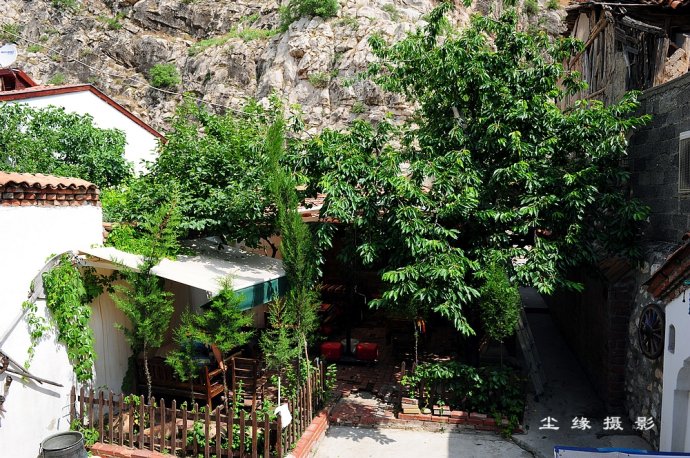
palazzo farnese
景点印象
Expl0rer007
The little hill-top town of Caprarola hides a real gem: the Palazzo Farnese & its gardens. Both are worth the visit, with lunch to follow in the borgo of the old town. We knew about the splendour of the gardens, one of the best in the world, with its countless dramatic fountains and water staircase, as well as its peaceful loggia, but we were quite unprepared for the beauty, drama and quality of the rooms in the palazzo itself. From the front, it looks quite austere, the remodelling of a former citadel of the powerful Farnese family. However, inside, it is quite, quite different as you wander awe-struck from room to room with their walls and ceilings alive with colour and movement. The Grand Staircase ascending to the main rooms is extraordinary, with its dull grey stone offset by the kaleidoscope of the surrounding colours of the walls. If one of the staff beckons you urgently whilst you are in the middle of perusing the paintings anywhere in the palazzo, take him at his word and don't ignore him: he is signaling that you can now access the gardens. Don't miss them.
niccol_t173
The Farnese Palace is a gem. Its Historical and Architectural relevance makes it a must, if you pass from Northern Latium. It warrants a day-trip if you are in Rome.
bianches
This palace, built in the sixteenth century for the Farnese family (at least two of them later became popes in Rome) was planned as a pentagonal fortress, and ended up as a beautiful enormous suomptous country villa or estate for cardinal and sometimes for the pope. The salons, the bedrooms, every space is adorned with paintings and frescoes. The guide will tell you everything, yes absolutely everything (and sometimes it is too much, perhaps she could be a bit more selective?). Who built what when and why, who lived where and to do what. I retained that when a pope came here, he took along some 300 staff (cardinals, servants, cooks, etc). There were two kitchens, one for the pope (to be sure nobody could sneak poison into his food), the other one for everybody else. I am still not clear whether the CASINA DEL PIACERE in the garden was a place for contemplation/meditation, or had more worldly functions as well (in Italian, CASINO meant -and to many people still means- brothel. Yet casina (small house) is not the same as casino! We missed the visit to both the garden and the CASINA DEL PIACERE due to rainy weather. The room I liked the most is la SALA DEL MAPPAMONDO. And note the satiri or fauni (half goat half horned humans), on the frescoes along the stairs, some of them of female gender!
680vittoriaz
loved the frescos inside palazzo farnese. especially when watching concerts inside at night. The multi level floors can be seen by walking on this wide medieval staircase.
elspethb472
This stunning palace left us speechless. The wall and ceiling frescos are beautiful and the sloping gardens are a gem in themselves. Leave yourselves plenty of time as each room has so much detail in the paintings that you don't want to miss anything. Some wonderful restoration work has been carried out to bring this interior back to its former glory.
eangelm
Villa Farnese (also known as Villa Caprarola) is situated above the town of Caprarola, Lazio, about 50km north of Rome. The Renaissance villa should not be confused with Palazzo Farnese or Villa Farnese both of which are in Rome. Giulia Farnese was mistress to the Borgia Pope, Alexandra VI and it was through this connection that she managed to get her oldest brother, Alessandro, created Cardinal. The estate was acquired by Cardinal Alessandro Farnese (the future Pope Paul III) who had designs prepared for a fortified castle. The fortress foundations became the base on which the present villa was constructed. A grandson of Pope Paul III, also named Alessandro Farnese and also a Cardinal, had the designs made to turn the partly constructed fortress into a villa or country house.The interior was built over five floors with each floor having a different function. The main rooms are on the first floor and only part of the villa is open to the public, but it is still very impressive with frescoes, marbles, paintings and some furniture on display. The vast gardens are equally impressive, with fountains and grottoes. There were also extensive stables but these have now been converted to a centre for meetings and conferences. Definitely worth a visit, and not overrun by tourists and so no queues (at least none when we were there). As indicated above only some of the rooms on the first floor are open to the public, so don't expect to be able to visit all five floors.
patinhongkong
This High Renaissance palazzo dominates the little town of Caprarola. Its off the beaten track but well worth a detour to see its frescoed rooms (every inch is frescoed - walls and ceilings) and extensive gardens with cascades and fountains, parterres and grottoes. We arrived at about midday and the lady on the ticket desk suggested we see the garden first as that closes at 1pm, whereas the palazzo is open all day. She showed us through to the garden and left us to climb to pavilion at the high point of the grounds. Stones figures spilled water into pools and porpoises spouted water down rills. Magic. In the house, the deeds of the Farnese popes, biblical and classical themes are shown as room follows room. Perhaps most fascinating of all is a room painted with maps of the world as it was known around 1500. It costs €5 for both the palazzo and gardens and it's a pity it isn't better known.
pagheca
If it was sitting elsewhere in Europe there would be a queue of hundreds of visitors all summers, coffee bars and postcard stands everywhere.As this is Italy we could visit it TOTALLY ALONE. You will not find anything like that. Not even a lift!The place is literally a gem. It is enormous, it has a strange pentagonal shape and is situated on the top of the old village of Caprarola, visible from tens of km of distance. Inside, it's just amazing: the stairs bringings up, and every single room is totally painted with coloured frescos. Everything looks like the Farnese moved away yesterday and nobody touched everything. Even some of the windows glasses are the original. The garden is fabulous, with a cave covered with faunos and other embellishment. At the end of the tour you will visit the maps room, completely covered with frescos representing the various continents and, on the ceiling, a fantastic fresco of the constellation.It's a pity this is so forgotten, but from the tourist point of view that is a plus.That's Italy... pure fascination.
ManiagoRina
This is a beautiful history lesson of the true story of the Farnese family the rooms were designated for doing salacious things that Popes were not supposed to do and despite the lovely themes, the one room for the Roman and Greek mythological features and they have really kept up the renovations of frescos were beautiful. I enjoyed this but if you are Catholic you must be ashamed of what these powerful people did with the power that they wielded.
ADPRM
What we saw of the Palazzo Farnese was very interesting -- but basically only one room. The gardens were shut as was most of the Palazzo, except for the main public room just beyond the entrance. Needless to say, none of this information was communicated until after collecting the admission fee. Apparently it is common for significant parts of it to be closed, so try to check before going. We found a wide disparity in Lazio between those attractions where the staff was engaged and those where they couldn't care less about visitors -- this clearly fell in the latter category.
599davido
We went as part of a coach tour. To the surprise of the tour manager, coaches now have to park some distance away, involving a longish walk through the small town along streets with no footpaths - a dangerous procedure. The palazzo was beautiful, though the lady who walked round with the group (and told us nothing) seemed pretty abrupt and unfriendly - an Italian jobsworth. These things didn't spoil the visit, but it could have been better - especially the coach parking. Couldn't it be permitted to drop the party outside, then park elsewhere? Do they want visitors?
shashab33
Like Villa Lante, Villa Farnese at Caprarola,sits on a rise overlooking the narrow streets and rooftops of a medieval town - but everything here is a couple of notches grander. the ascent through the town is steeper,the surrounding landscape more rugged,the view from the entrance more mountainous,and the villa itself is far more imposing. The house here is atrue palace with acres of frescoed and gilded chambers that fit together in a complex pentagonal design. At the rear,a stone bridge over the dry moat leads to a walled garden with four tree-shaded squares with a waist-high boxwood outline. While absorbing the aura of the place,we noticed " a secret garden" with trellised climbing roses and grapes and a series of rough earthern steps bordered by masses of Camilia and Rhododendron. Until the trees parted and we emerged on the first fountain of Casina de Piacere. The goat head stood out with water gushing from every orifice - mouth, nose, eyes and ears. The flow of water was fed by a cascade spilling off a colossal goblet to a pair of river gods reclining amid bubbling stone pots. The next level up, the swirls of stone and spray gave way to a serene geometry of neatly clipped foliage. I had reached the famous Terrace of the Herms - two squares of smooth grass and clipped box edged with a low stone wall on which a collection of 28 males and females Herms,each with an urn balanced in its head. The eerie stillness was reminiscent of Japanese gardens pared down to its essence: i never dreamed that severe formality and rampant pomp could create so surreal a space.
guorlan
Here is another of those half forgotten wonders Italy is full of: a magnificent palace with the most amazing frescoes and a lovely garden, all in the tiny village of Caprarola.The Farnese family had its own share of popes and cardinals, and especially one of these, Alessandro, made this residence a stupendous example of what one could do with plenty of money. Much more impressive even than the Palazzo Farnese in central Rome, this is a visit that anyone taking the trouble to get here, about an hour from Rome by car, will not regret nor easily forget, and all for a modest 5 € entrance ticket.
filippeion
Palazzo Farnese is amazin from the architectural and artistic point of view. But if you come to visit in the week-end don't miss the multimedia exhibition located in the underground area of the building.It's like travelling in the past, listening and watching to the stories of the most important characters of the Farnese family. Popes, cardinals, conuerors and princes. At the end of the exhibition you will know more about this incredible dinasty. Very recommended.
Floss900
We were so suprised what an amazing place. Beautifully painted rooms that went on and on. We were so impressed. This place beats some of the more famous places in Rome. Well worth a visit.


